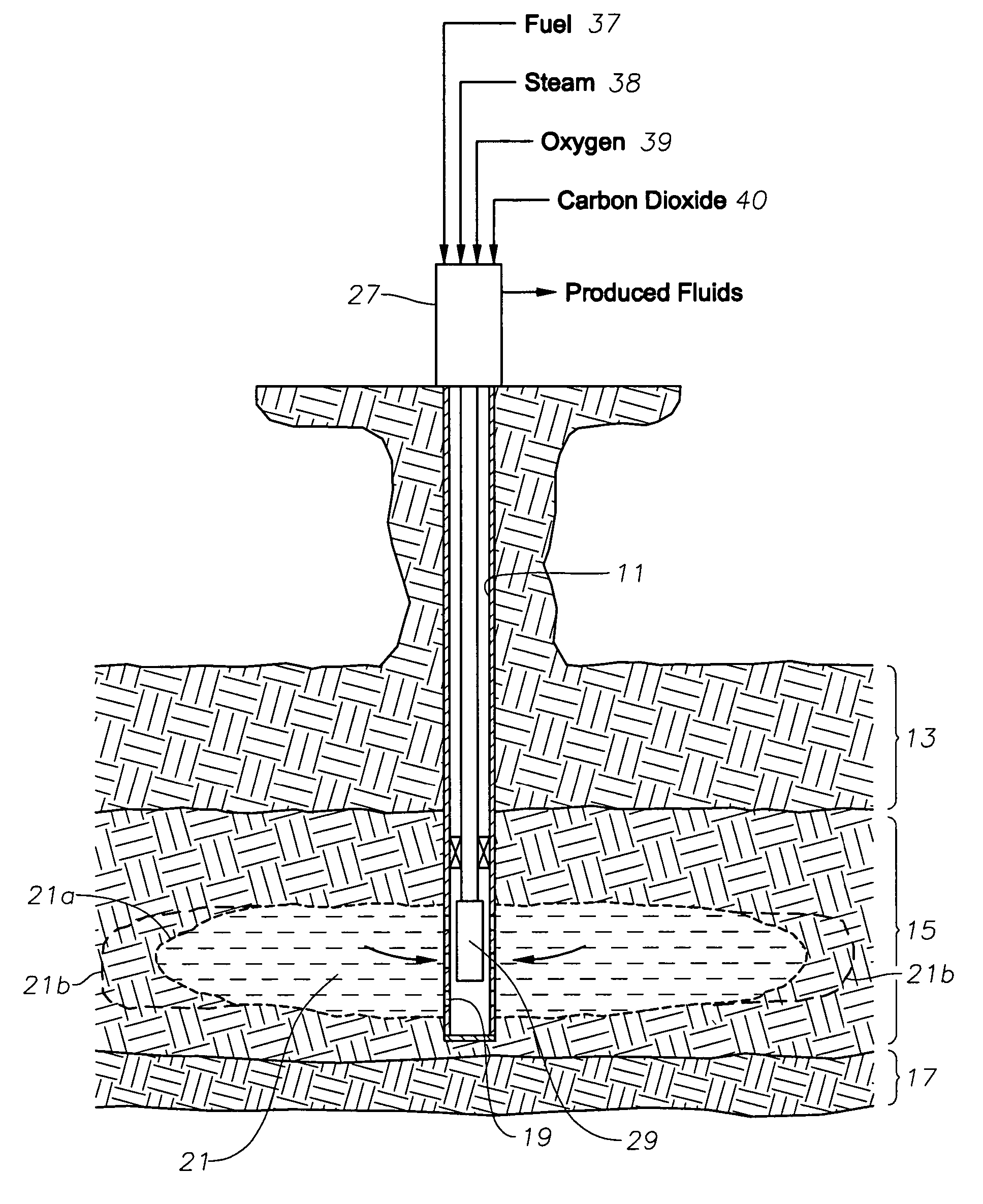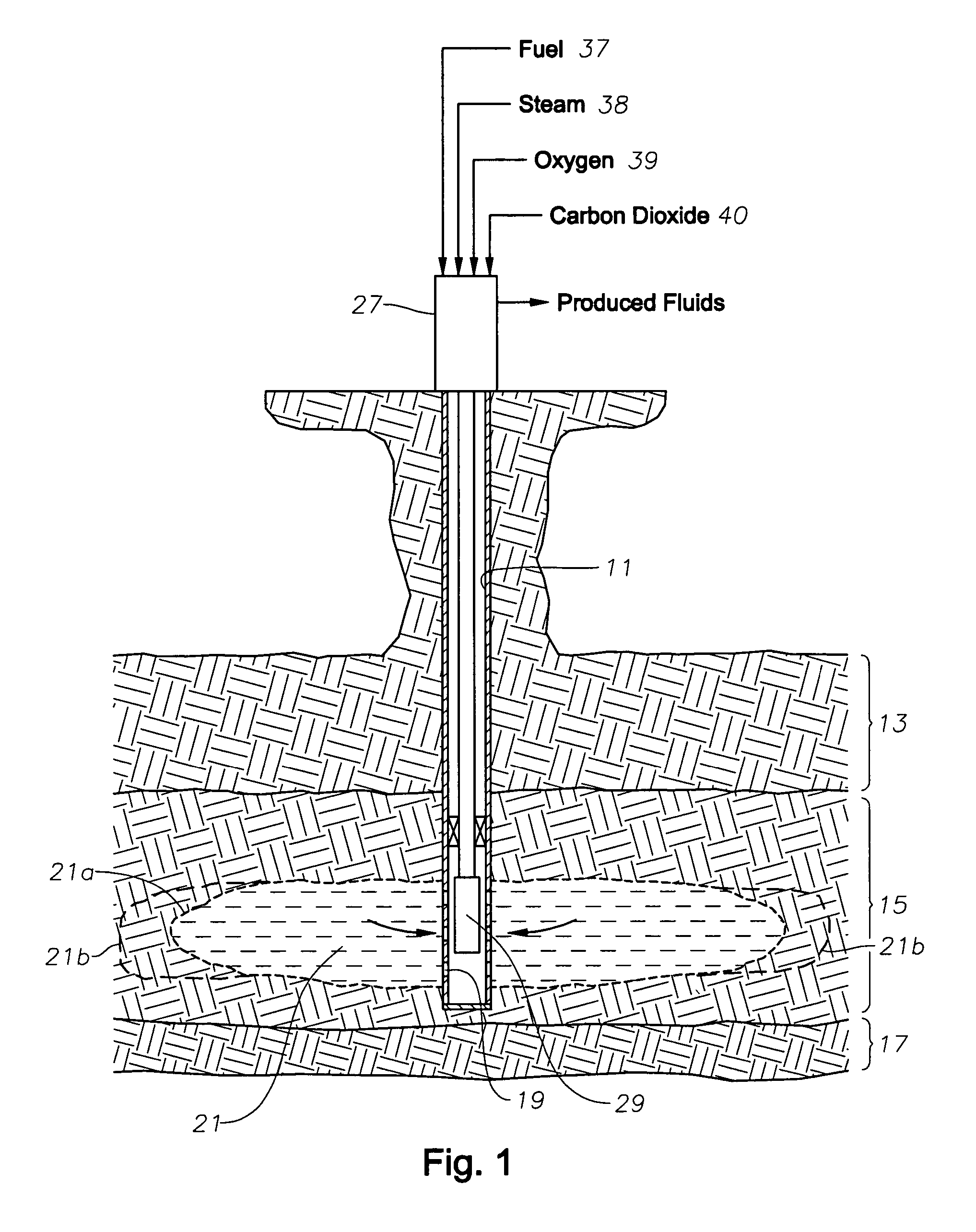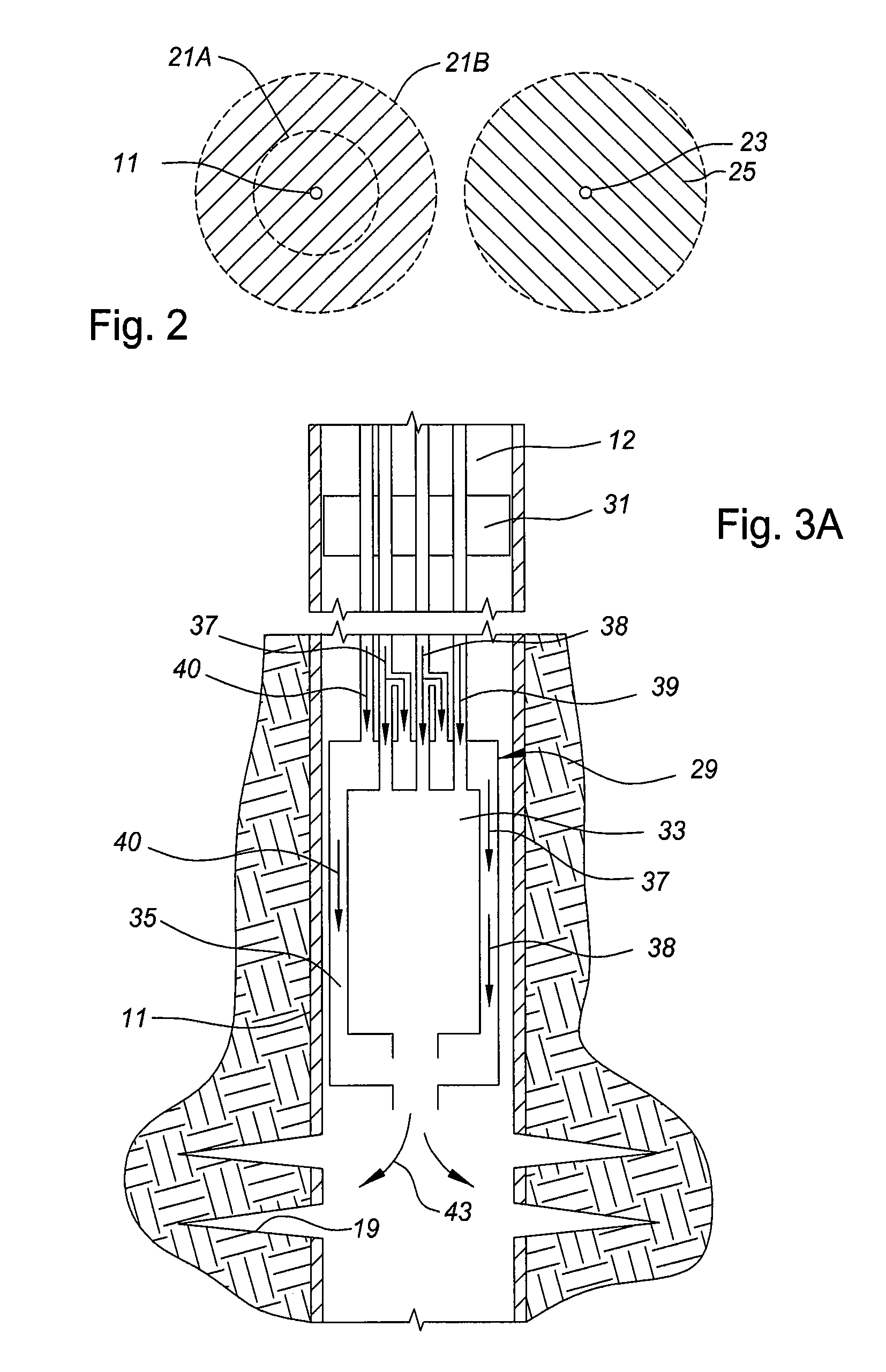Method for producing viscous hydrocarbon using steam and carbon dioxide
a hydrocarbon and viscous technology, applied in the direction of fluid removal, insulation, borehole/well accessories, etc., can solve the problems of increasing the api gravity, difficult and expensive hydrocarbon recovery, and lowering the viscosity of the hydrocarbon in situ, so as to increase the production and reduce the viscosity of the hydrocarbon
- Summary
- Abstract
- Description
- Claims
- Application Information
AI Technical Summary
Benefits of technology
Problems solved by technology
Method used
Image
Examples
Embodiment Construction
[0014]Referring to FIG. 1, well 11 extends substantially vertically through a number of earth formations, at least one of which includes a heavy oil or tar formation 15. An overburden earth formation 13 is located above the oil formation 15. Heavy-oil formation 15 is located over an underburden earth formation 17. The heavy-oil formation 15 is typically a tar sand containing a very viscous hydrocarbon, which may have a viscosity from 3,000 cp to 1,000,000 cp, for example. The overburden formation 13 may be various geologic formations, for example, a thick, dense limestone that seals and imparts a relatively-high, fracture pressure to the heavy-oil formation 15. The underburden formation 17 may also be a thick, dense limestone or some other type of earth formation.
[0015]As shown in FIG. 1, the well is cased, and the casing has perforations or slots 19 in at least part of the heavy-oil formation 15. Also, the well is preferably fractured to create a fractured zone 21. During fracturin...
PUM
 Login to View More
Login to View More Abstract
Description
Claims
Application Information
 Login to View More
Login to View More - R&D
- Intellectual Property
- Life Sciences
- Materials
- Tech Scout
- Unparalleled Data Quality
- Higher Quality Content
- 60% Fewer Hallucinations
Browse by: Latest US Patents, China's latest patents, Technical Efficacy Thesaurus, Application Domain, Technology Topic, Popular Technical Reports.
© 2025 PatSnap. All rights reserved.Legal|Privacy policy|Modern Slavery Act Transparency Statement|Sitemap|About US| Contact US: help@patsnap.com



